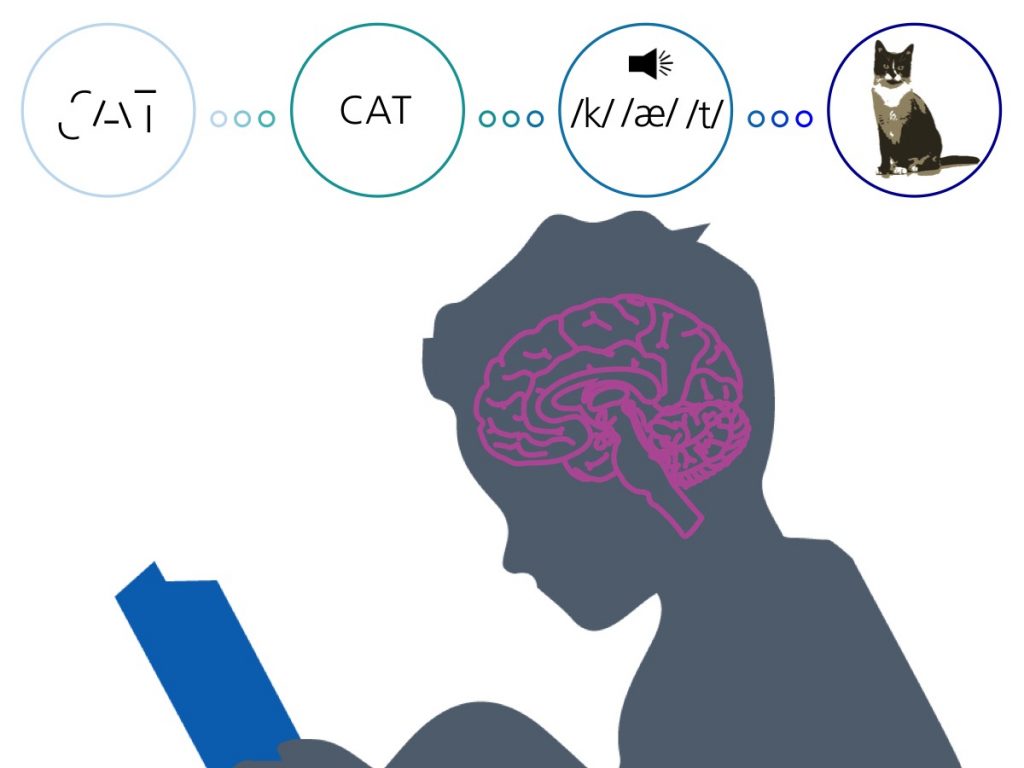
Have you ever considered what your brain must do to process a printed word? Learning to read requires massive changes in the wiring of the brain. The brain must develop new ways to combine visual, auditory, and language information. Consider what your brain must do each time you see a word: First your brain must recognize a complex pattern. It must then convert this image to a sound as you hear the word that was printed on the page. The brain must then match this sound with its meaning. What’s more, this whole process must occur in the blink of an eye, just a few hundred milliseconds, for you to fluidly read a page of text. The ability to match a sound with its meaning is a process that is built over years of experience with language. But the ability to quickly decode printed symbols, or letters, into sounds requires substantial training and practice.
-
- Auditory
- related to hearing
- Genes
- the inherited biological ‘recipe’ for appearance and other individual characteristics
- Literacy
- the ability to read and write
- Neurons
- cells located in the brain and throughout the body that are specialized to communicate messages
- Phoneme
- the smallest unit of speech (a sound)
- Phoneme “play”
- manipulating sounds that make up words
- Phonological awareness
- the ability to identify and manipulate individual sounds in spoken language
- Primary visual cortex
- an area in the brain responsible for interpreting visual information
- Retina
- neural cells at the back of the eye that are sensitive to light
- Skilled reader
- a reader who is able to focus on comprehension, rather than on sounding out words
- Visual word form area
- the area of the brain responsible for recognizing words during reading